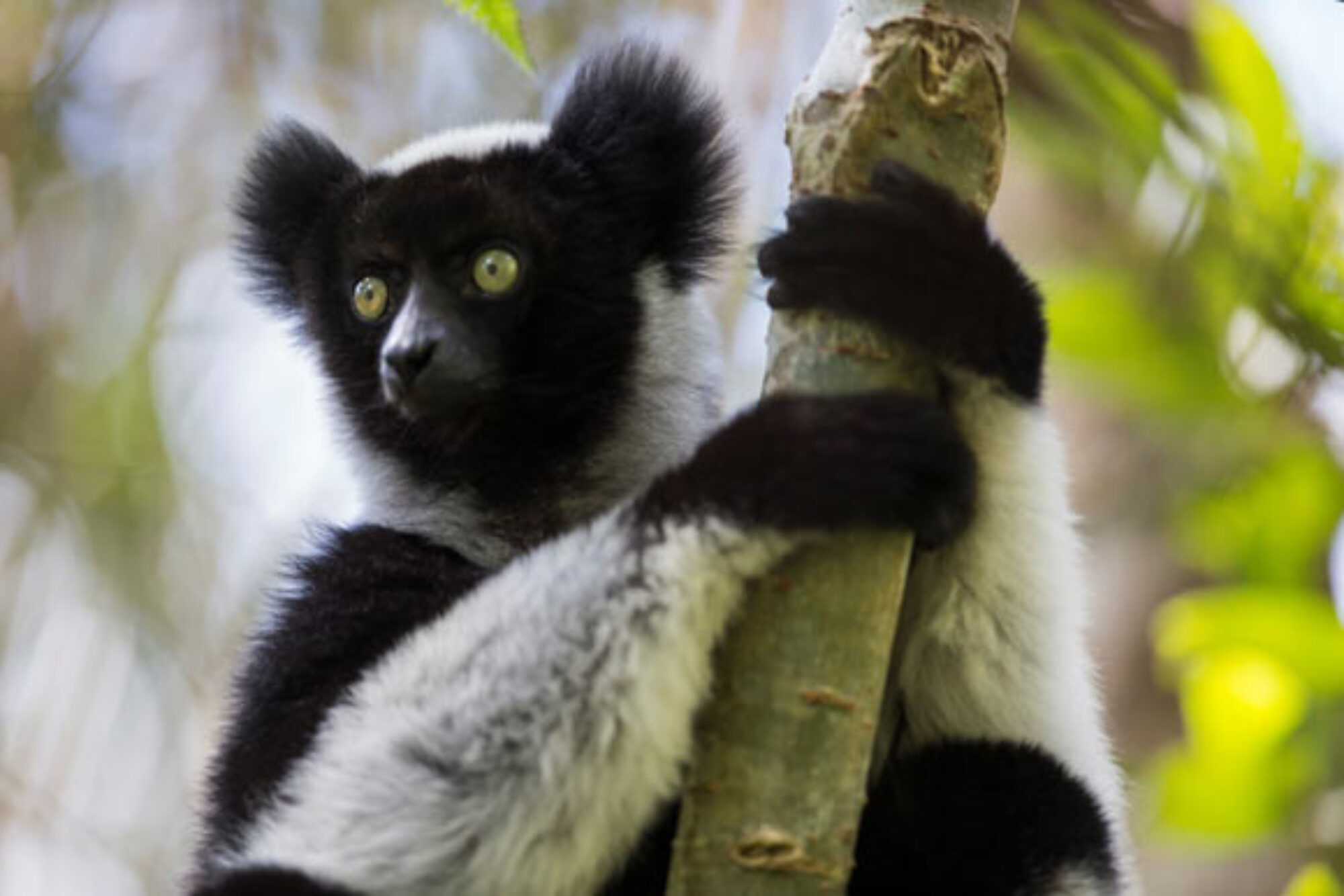Happy Birthday Josh, I can’t believe you are 16 already! 🥳🎂🎁🎉
We started our day with coffee delivery to our tent at 6:15. Of course Rick was already up. We had breakfast at 6:45. After breakfast we talked to Riker because he thought we were staying until Oct 28 and our plane tickets said we were leaving on Oct 27. We preferred to stay until Oct 28 so we asked him to straighten it out. We also asked him to check on Rick’s suitcase.
We left the camp at 7:30 for a walk through the gallery forest. The gallery forest is defined as one where the canopy of the trees limits the light that reaches the forest floor. We got to the river and crossed it in kayaks. The river isn’t deep since it was dry until yesterday, so the men from the camp just walked us across the water. On the other side we saw kids herding zebu and people making moonshine from sugar cane to sell in the market. Here are some pictures
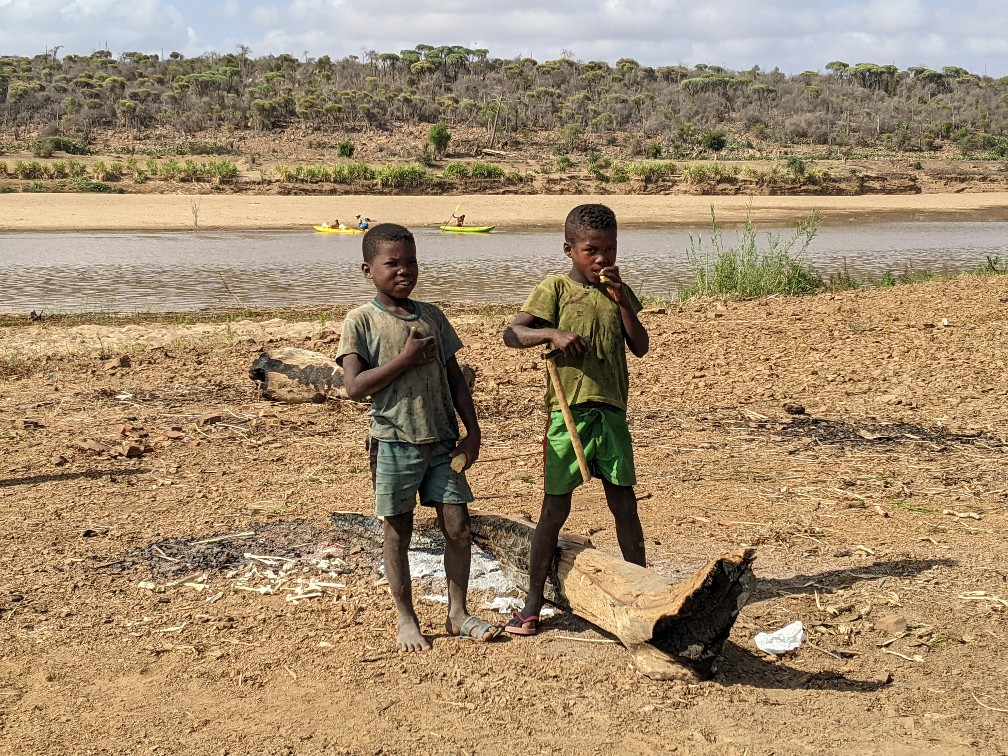
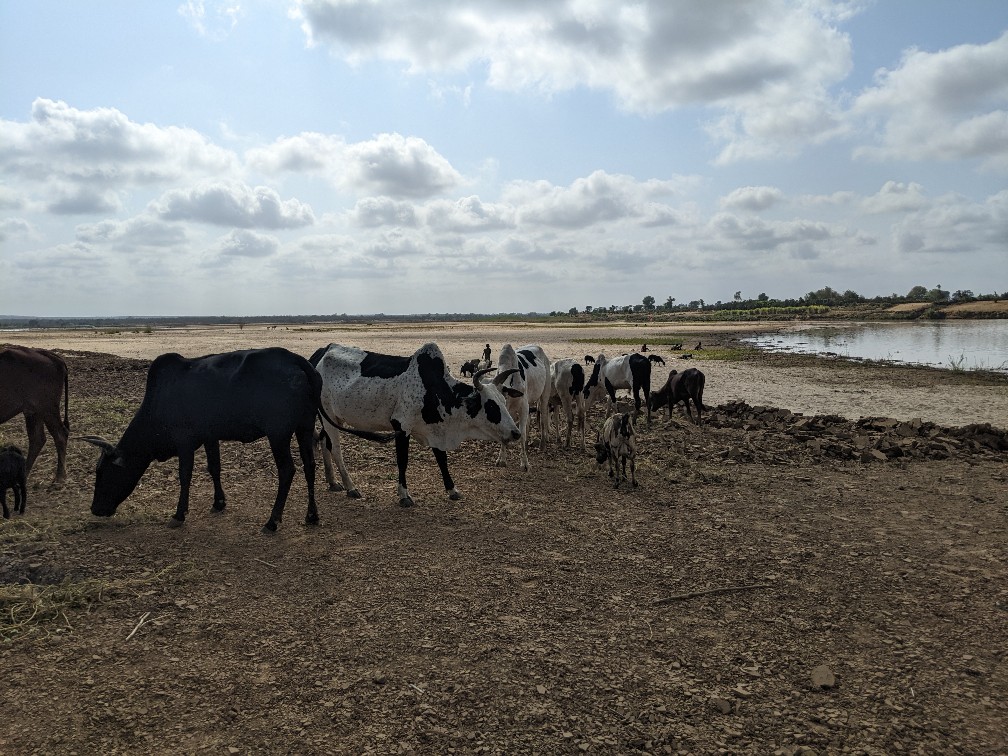
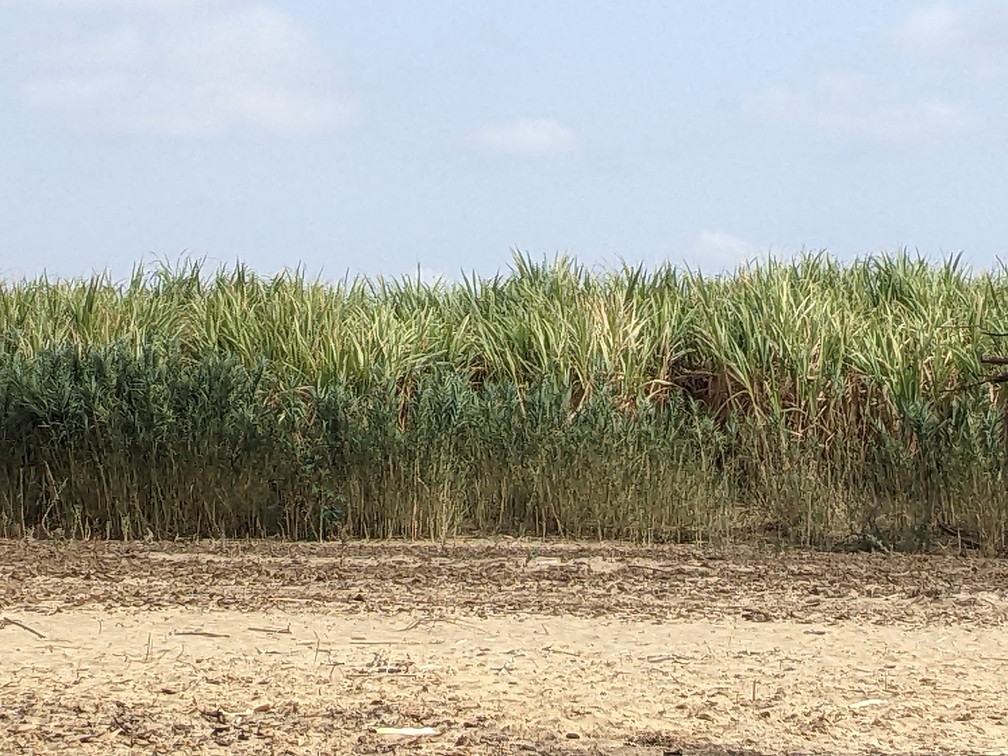
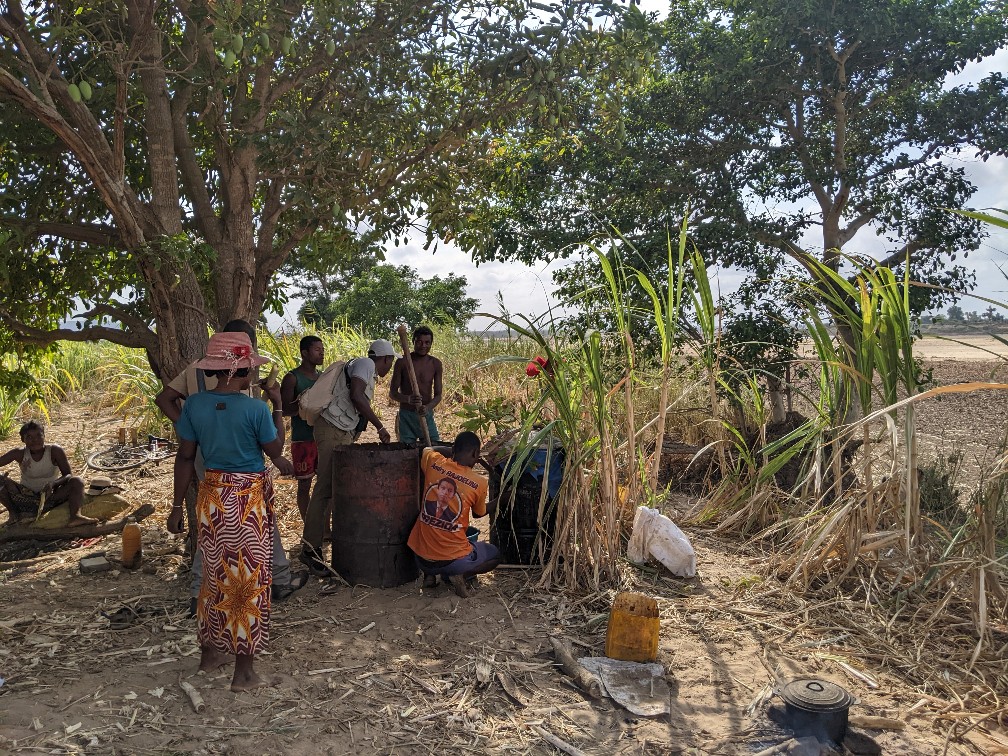
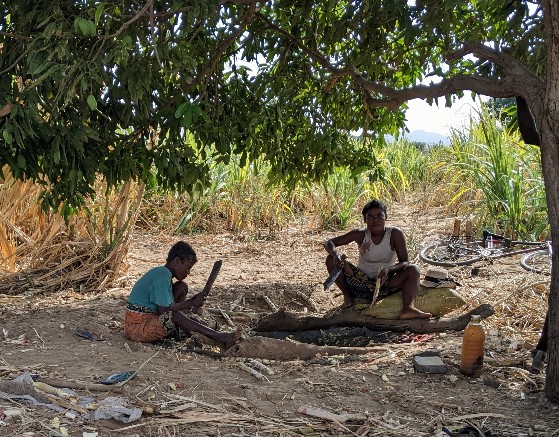
Before going into the sacred forest (it is sacred because at sometime they buried their dead there) to find lemurs we were told there were three Ps, no pointing, no picking things from the ground, and no peeing. We shouldn’t point with our fingers, instead we point with our whole hand, palm open, or with our index finger curled up. This is because the spirits of the people buried there may be near by and we might be sticking our finger in their face. The second and third rule are pretty self explanatory.
This was family’s private land and so a family member was there to accompany us and make sure we followed the rules. We also had a tracker with us to find lemurs by listening for their calls. There are a lot of tamarind trees in the gallery forest and the forest floor was covered with leaves. It’s the end of the dry season when the trees have dropped their leaves to conserve water. We walked a bit and came upon our first troupe of ring-tailed lemurs in the trees. They didn’t even notice us.
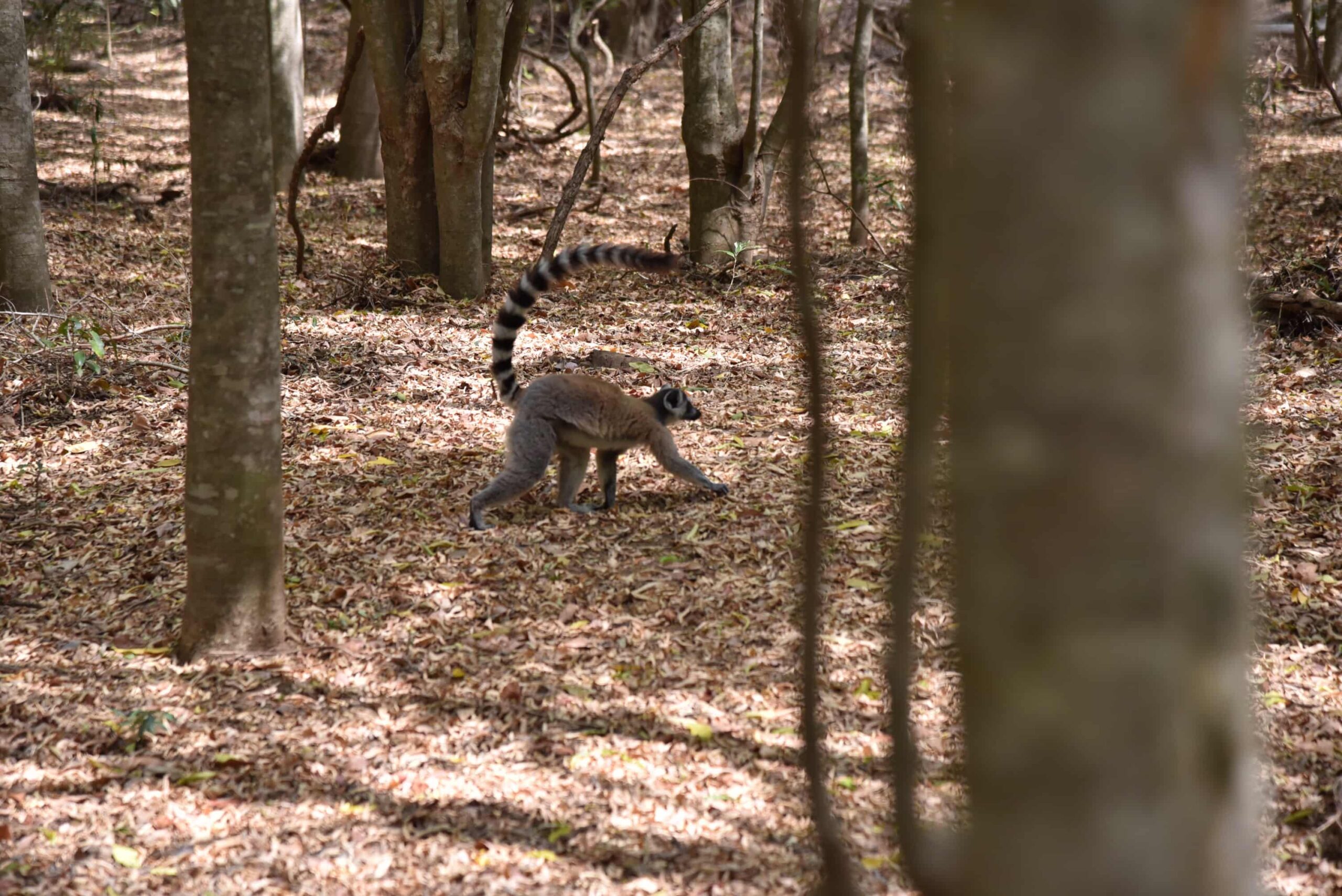

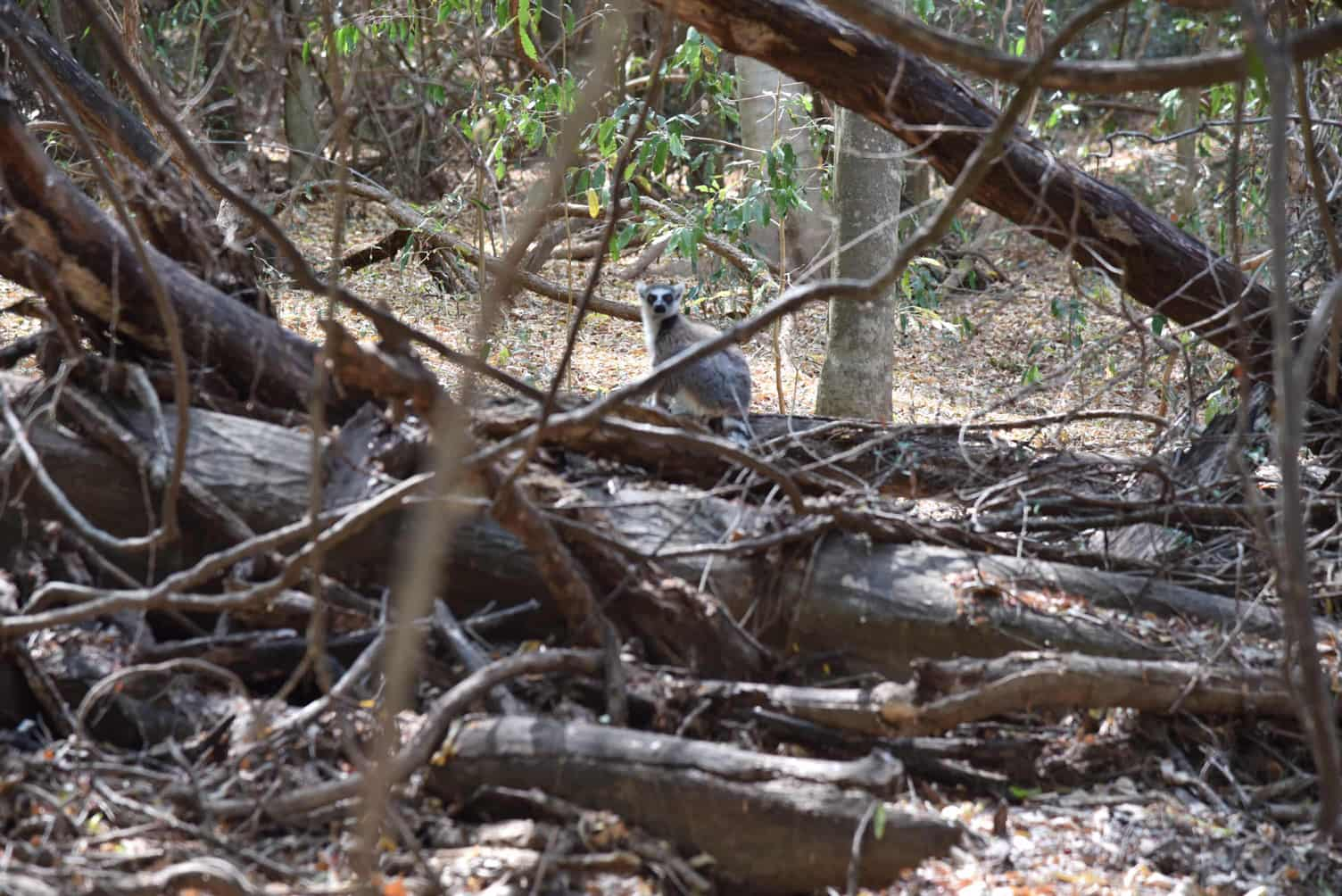
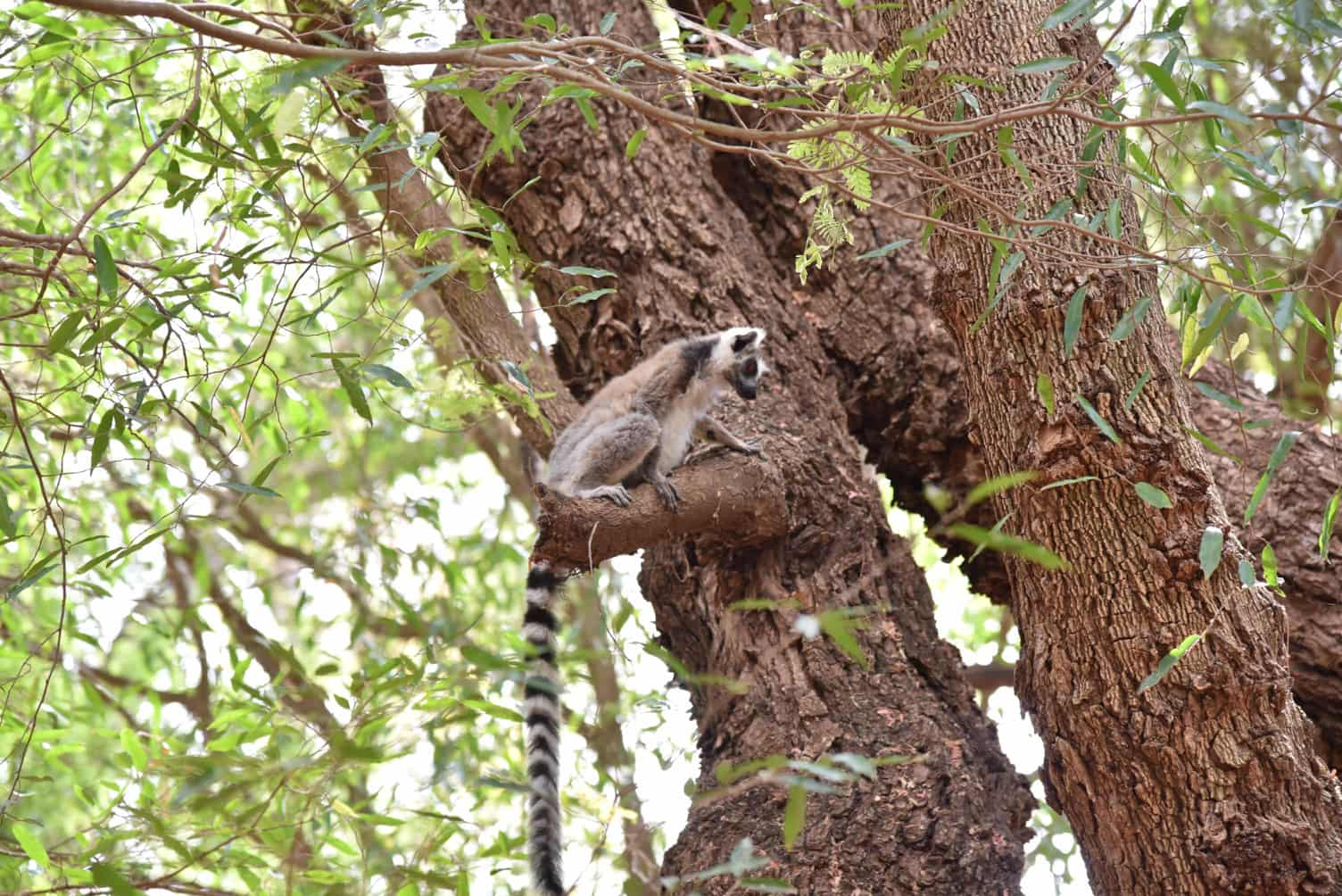
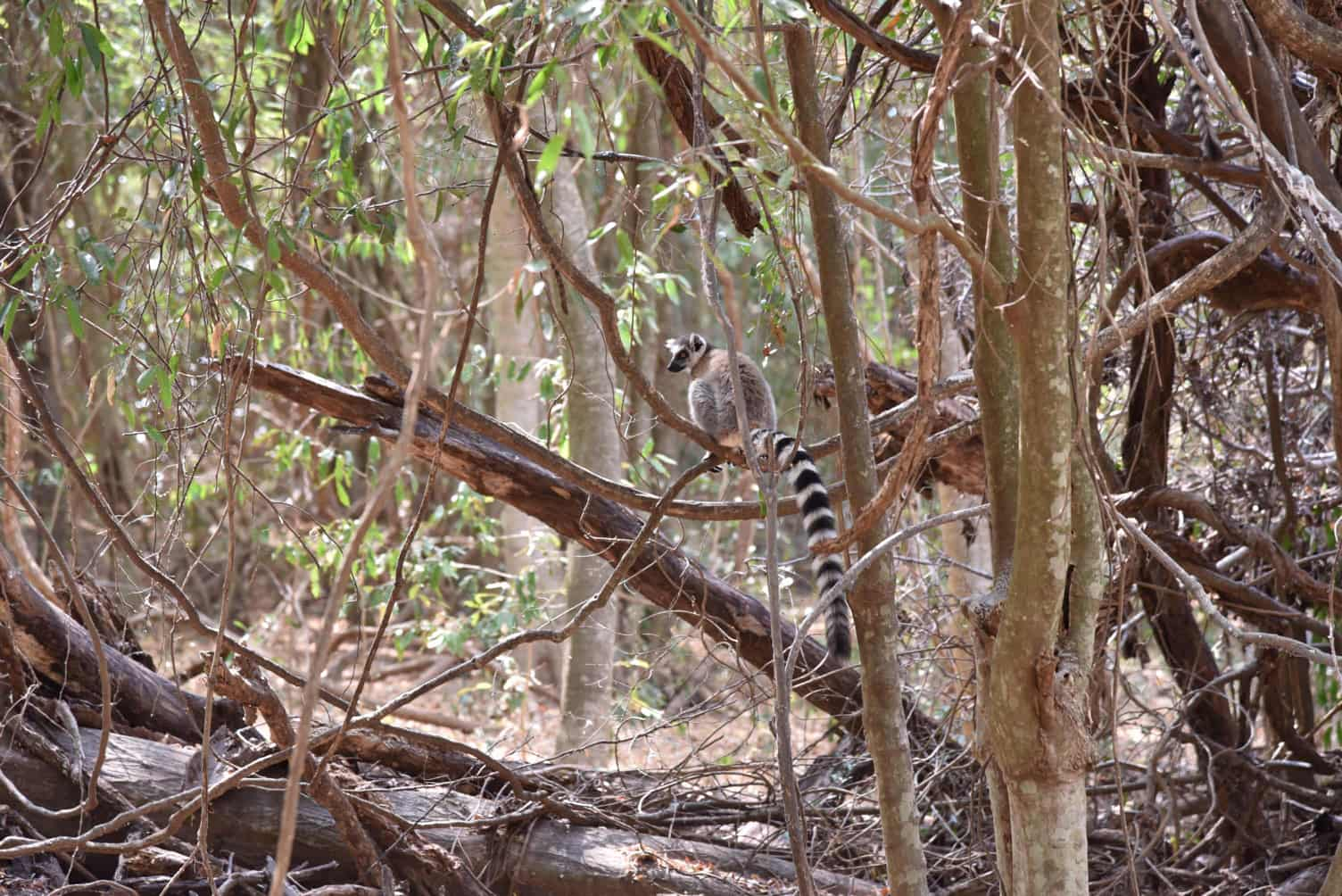
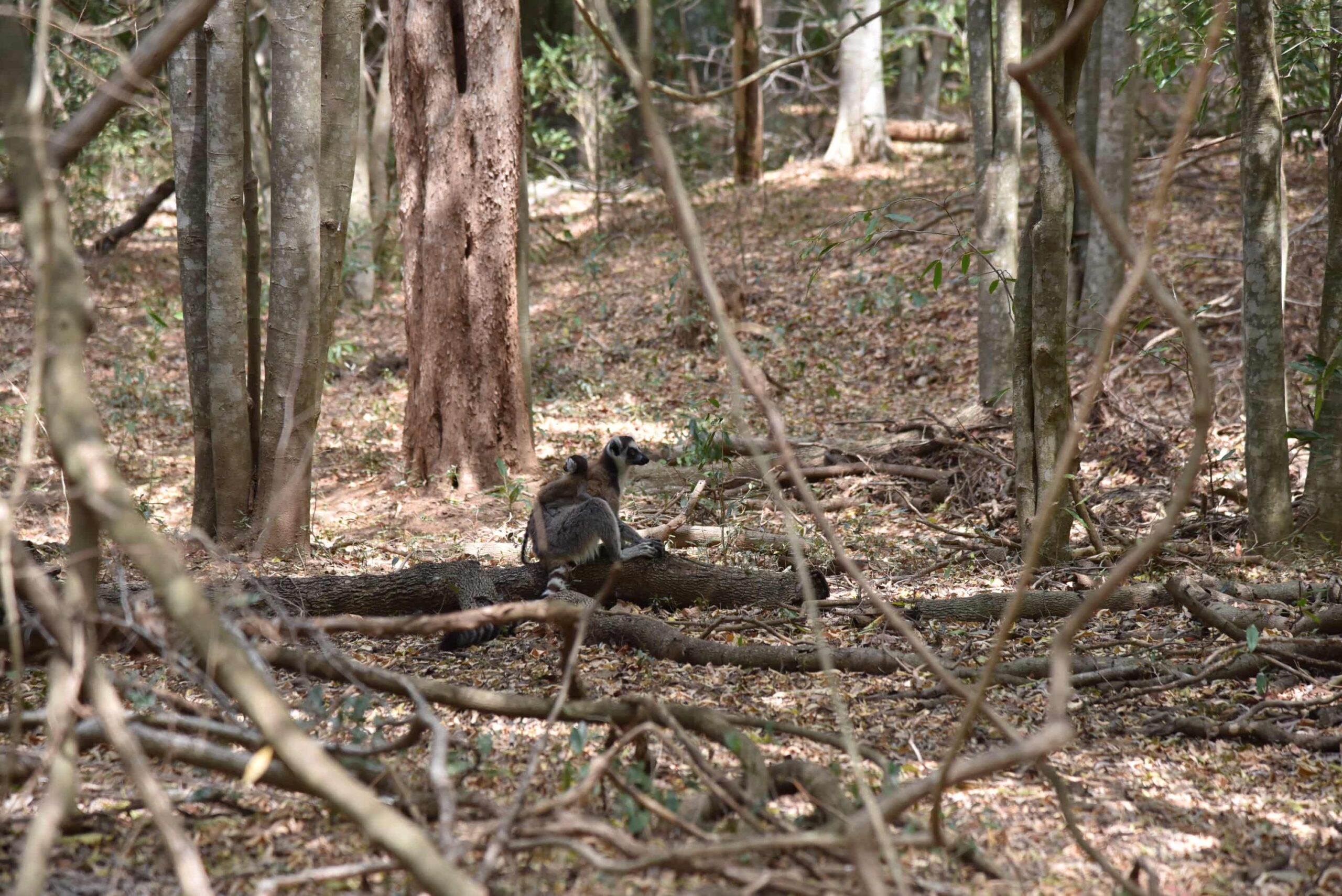
Ernest told us that a troupe of lemurs typically consists of 8 to 16 individuals. It is a matriarchal hierarchical society. Babies are born in September. The nurse from their mother for 3 months during which time the mother carries them. When they are first born they cling to her belly, after a month they move to her side and after another month they move to her back. After three months they start to become more independent and are totally independent at 6 months. They are born in September so that they are mature enough to survive the rainy season which runs from December through March. We saw several lemurs with babies. The predators of the lemurs are civets (wild cats), raptors, and boa constrictors.
The lemurs start their day feeding high in the trees. During the heat of the day they come down to the forest floor where it is cooler. They eat fruit and leaves. They use their ringed tails to lead the troupe and also wrap it around themselves to keep warm.
Lemurs mature in about two years. At this point the male “teenagers” are forced out of the troupe and must integrate with another troupe. There is a male hierarchy and the males must fight their way into the troupe and work their way up the ladder. The males have scent glands on their wrist and on their shoulders. They use these to mark their territories and to have stink fights for dominance in the male hierarchy. Apparently they get the scent on their tail and whip their tail at the opponent to cover him in ‘stink’. I don’t understand this behavior and we didn’t see it although we did see them marking the trees with their scent.
We moved on and saw some sifaka lemurs. They are the white ones that are also called dancing lemurs because they move across the ground by jumping diagonally. They can live peacefully in the same territory with the ring-tailed lemur because they do not compete for same food. We didn’t see any sifaka with babies. Their typical troupe size is a little smaller, more like 4-6 individuals. One reason they are white it because it is cooler for them in this hot region.
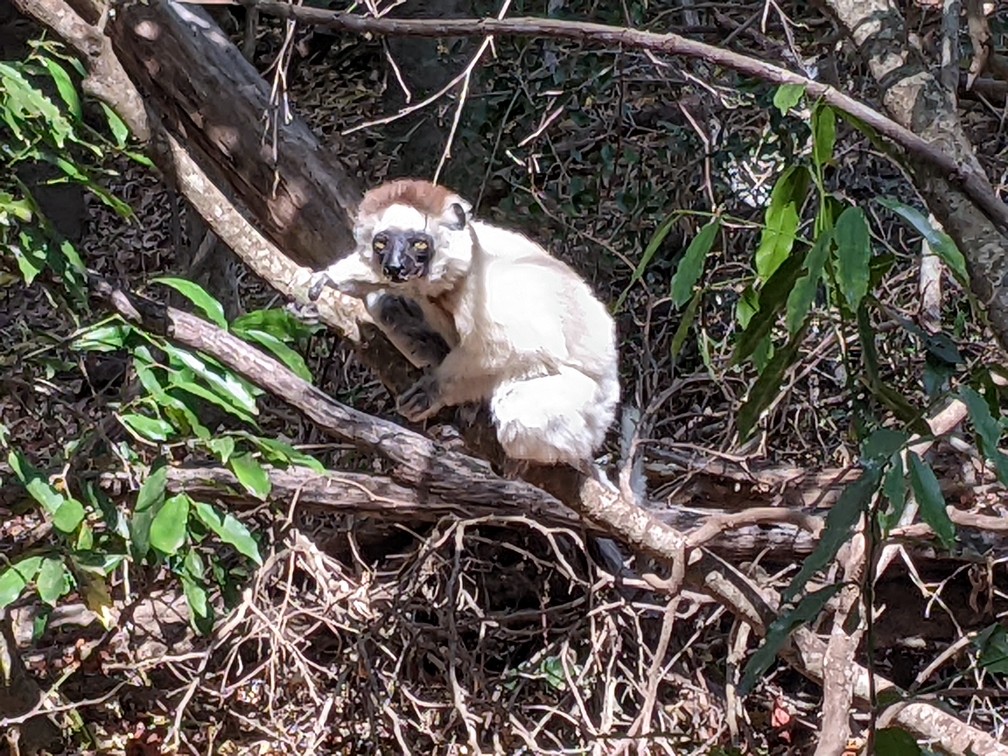
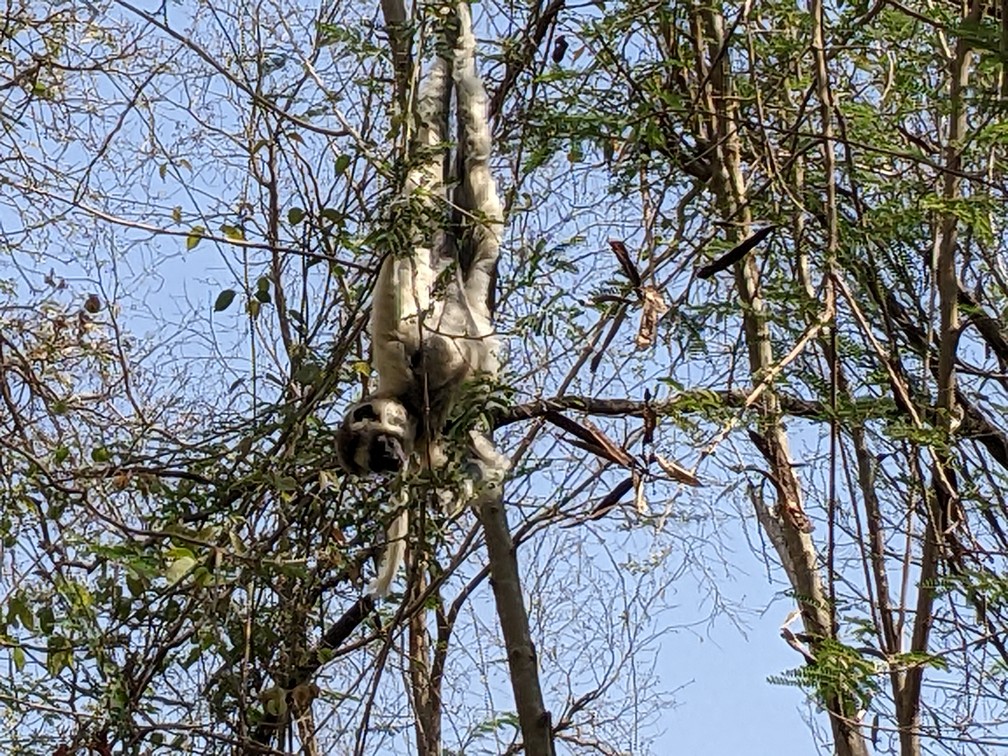

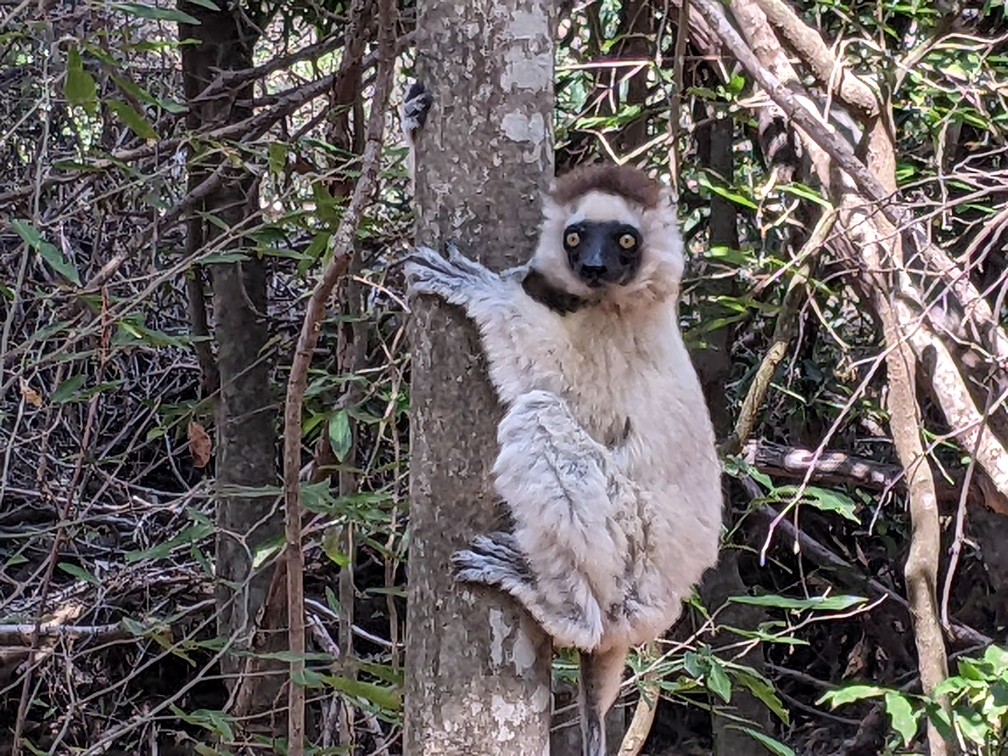
In terms of bugs we saw a millipede crawling on the ground. Centipedes are different as they can sting, but the millipedes’ defense is to curl into a ball and excrete a fluid/gas that repels the predator. People and animals have discovered that the fluid/gas repels mosquitos and other insects, so they spread it on their body. We also saw madagacar hissing cockroaches, living in the bark of the tree. They can be used to treat tetanus and we heard them hissing.
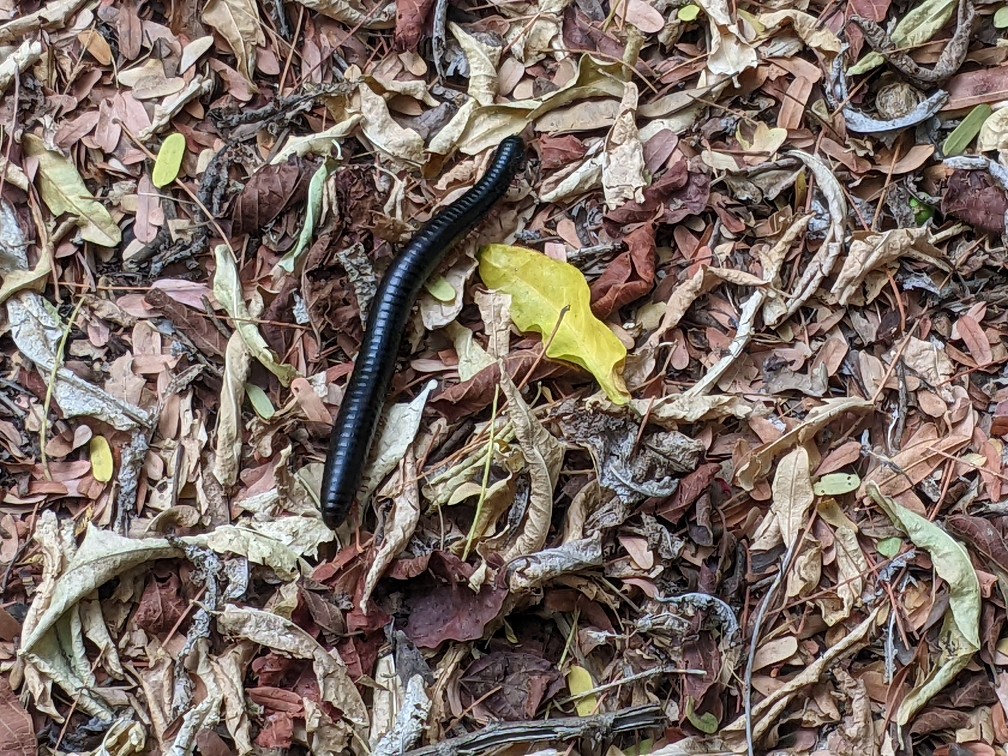
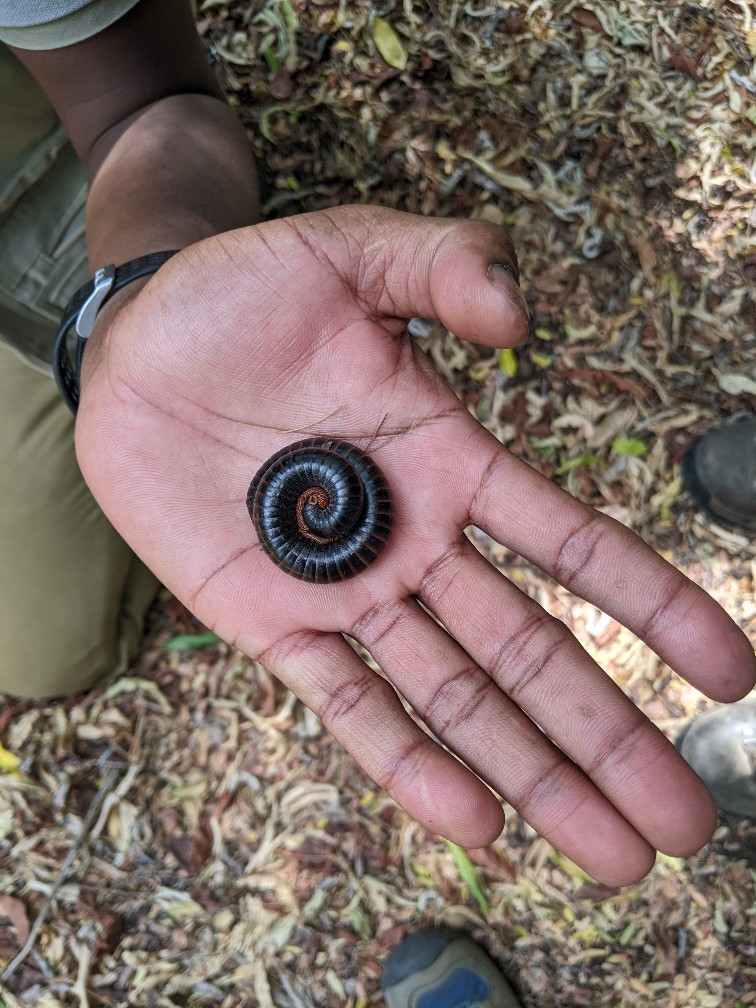
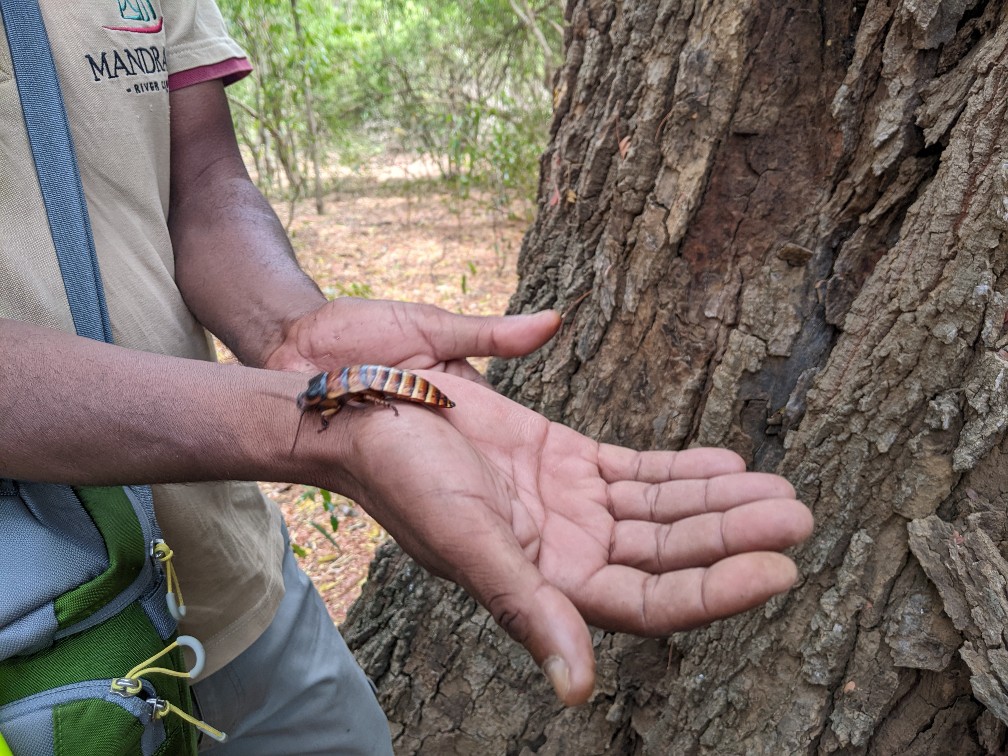
After our walk we crossed the river in the kayaks, returned to our car, and drove back to camp. Riker met us back at camp and told us that our travel arrangements had been resolved and that we were staying until Oct 28. We have a 9:30am flight back to Tana, which means we have to leave the camp at 4am. Ugh! Private charters from the local airstrip are available but we learned that would cost us $8,000 because there is a shortage of fuel in the country. No thank you!
We had lunch and then relaxed and blogged for the afternoon. Rick’s suitcase finally arrived! Yippeee!
Our next activity, a visit to a sacred spiny forest, was at 4:30. A spiny forest is one in which the canopy does not cover the forest. Spiny forests are much drier than gallery forests. Here in Madagascar they are dominated by octopus trees. We drove to a large village of 3,000 people (none of the locals have cars so we get a lot of attention when we drive through the village or town), parked and then walked down to the water. Kids were gathered around interacting with us, saying helo, what’s your name, etc. Ernest was facilitating the communication. At the water we got into kayaks and were dragged across the river. There were lots of people bathing in the river and generally having fun. There’s not much modesty here, people just seem to strip down and bathe.
On the other side we entered the sacred spiny forest. It is sacred because people are buried here so no pointing, picking, or peeing applies. Right where we entered the forest there was the tomb of a head of a clan who died in 1967. After he died they embalmed his body with sap and sealed it inside a piece of tree trunk. It was kept there until his family organized the funeral. The shaman is consulted to determine an auspicious day for the funeral. Then he is buried in the northeast corner of the tomb. Family from outside the village come with gifts, often a goat or a chicken. The man’s zebu are scarified and there is a feast with music and dancing. The man’s family can’t eat the meat of the sacrificed zebu, it’s reserved for only the guests. Then the zebu skulls are placed around the inside edge of the tomb so everyone can judgenhis success by the number of horns. His wives and children are also buried in the tomb upon their passing. I’m a little confused on where the man’s spirit goes. It may go to heaven which is located between earth and god or it may roam the forest. We saw three additional tombs as we walked.
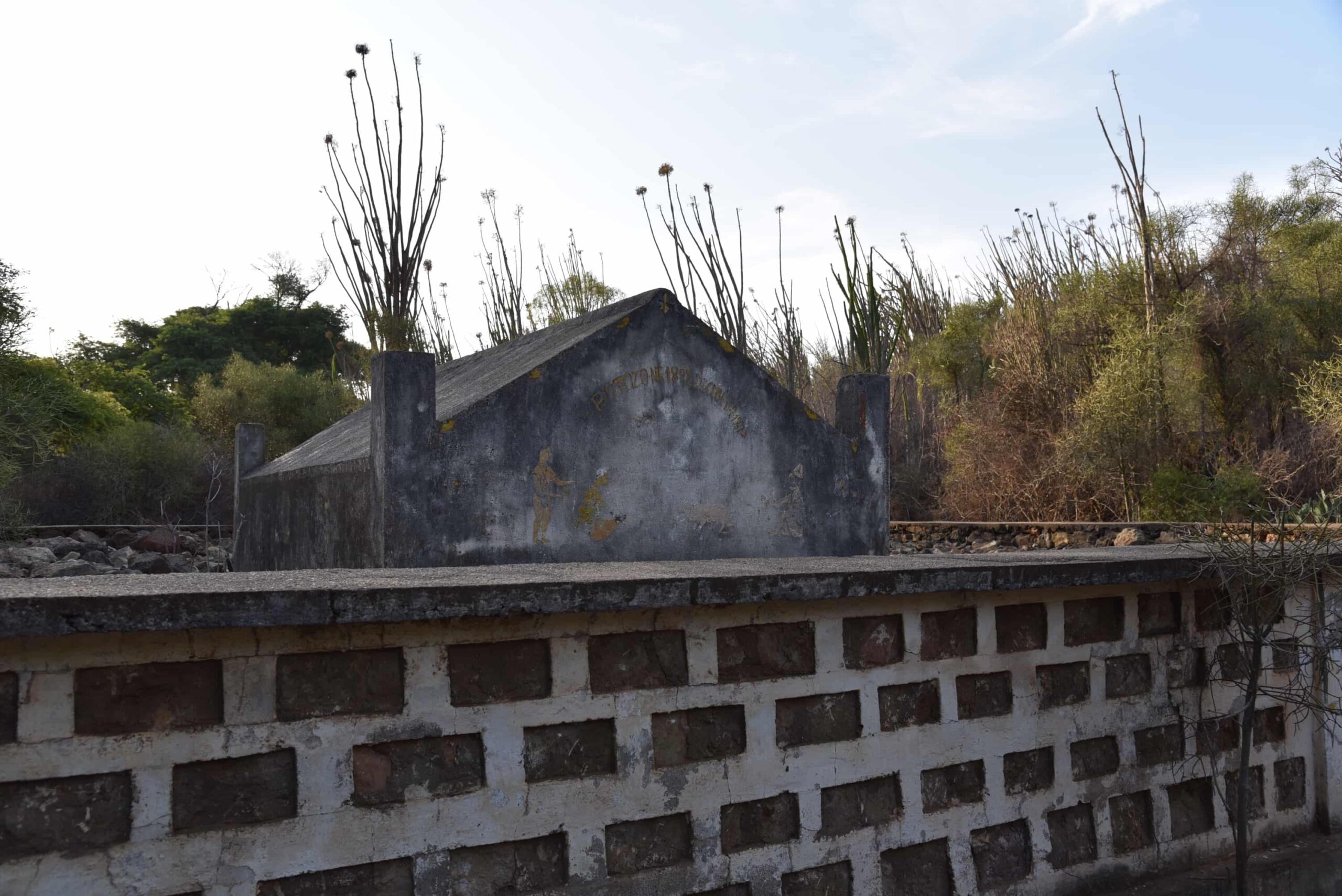
The spiny forest is filled with octopus trees which are tall spindly, cactus like plants covered with thorns and tiny leaves. The lemurs like to eat the leaves of these trees. We saw a couple of sifaka lemurs, one with a baby, along with a nocturnal sportive lemur, hiding in the crook of an octopus tree.
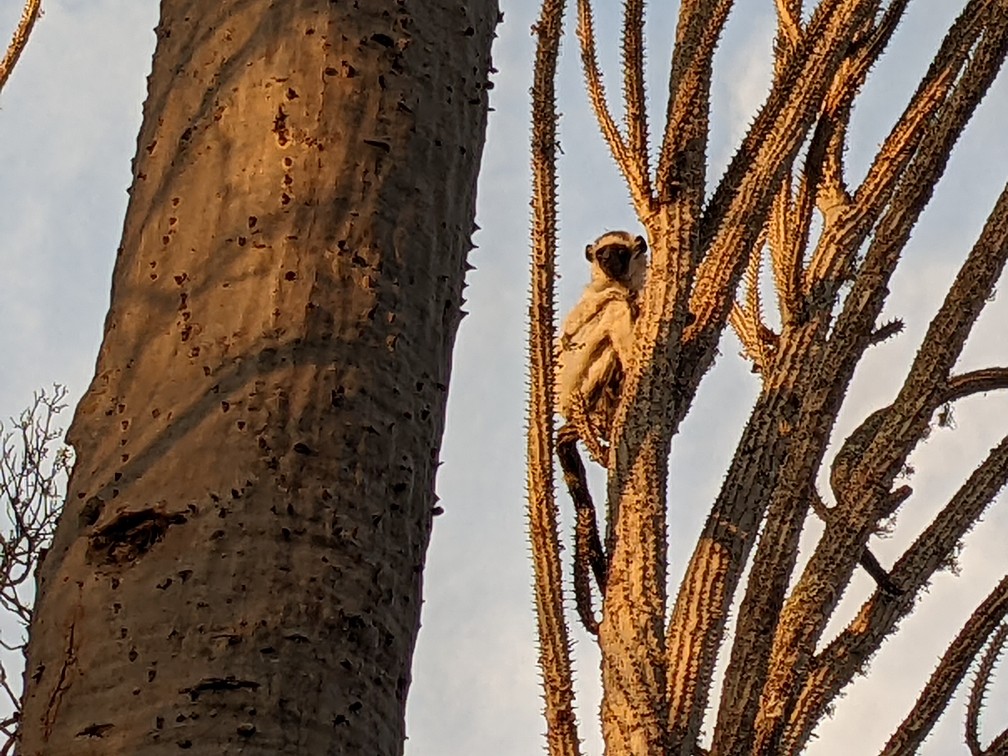
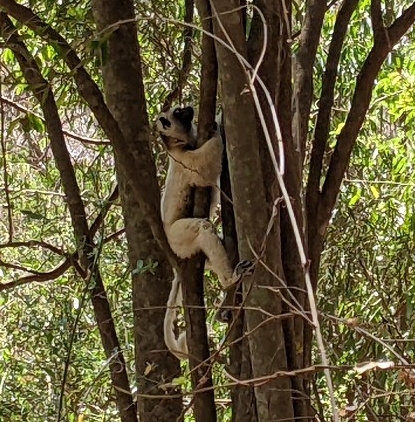
We also saw our first baobab tree. Baobab trees don’t have hard wood inside its trunk, rather it is spongy and people have cut it to get the spongy material out and drink the water it contains.
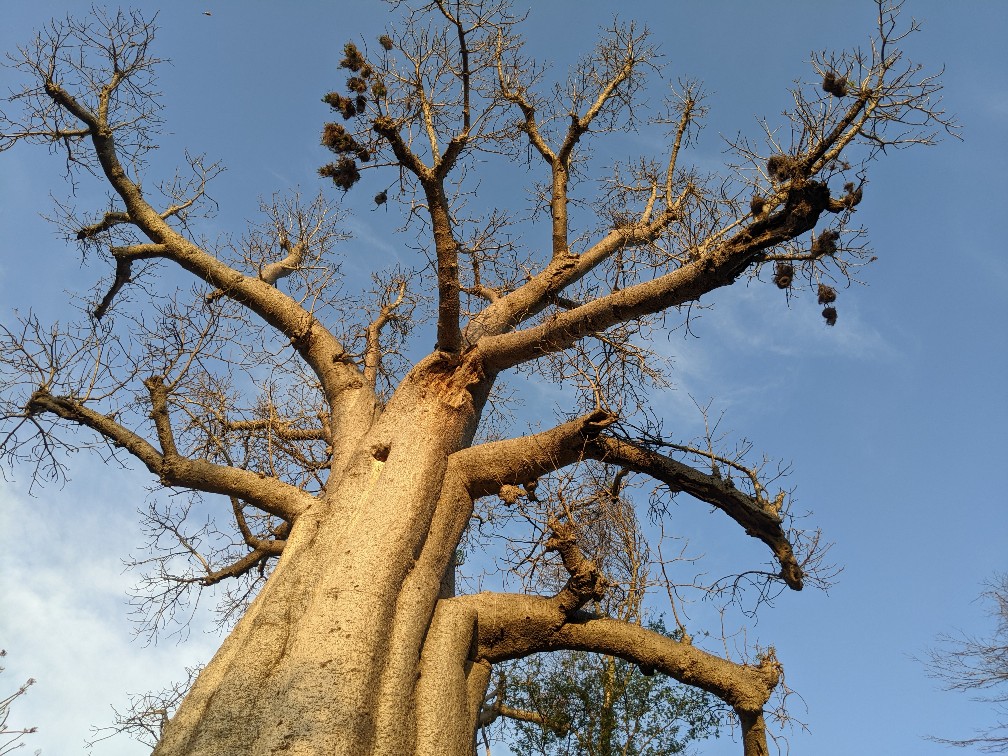
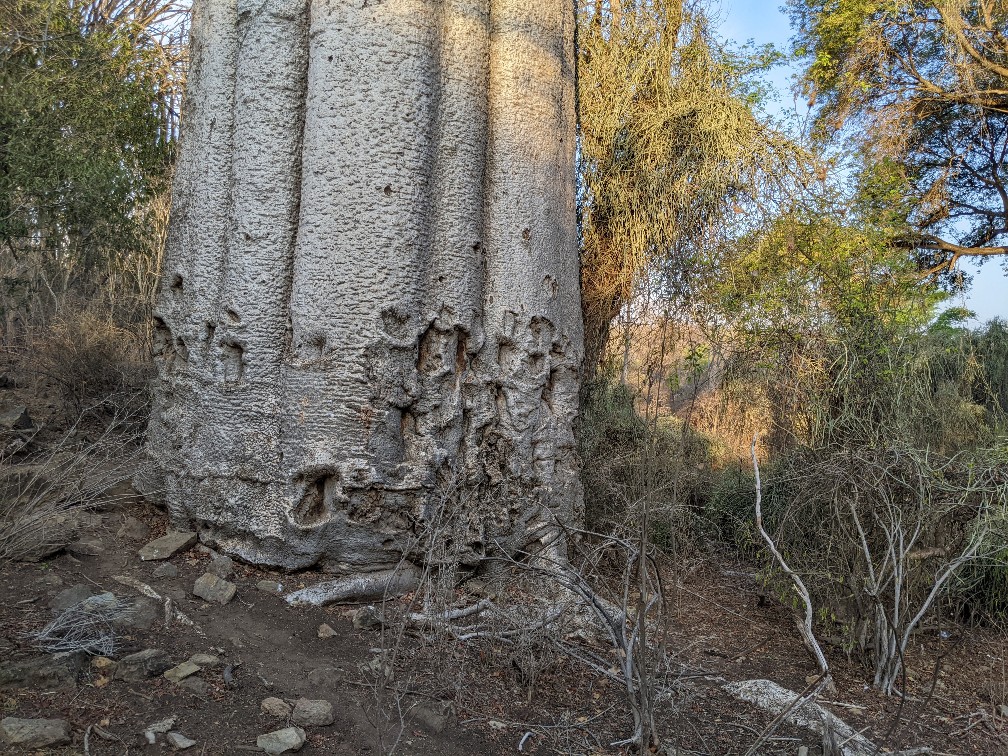
It was getting dark so we left the spiny forest and used the kayaks to get back across the river. Earlier in the year the locals had planted sweet potatoes in the dry riverbed. Now that the water is coming up they are digging up the yield and replanting the stems in gardens located elsewhere..
The camp had set up a “sand bar” where we sat and had sundowners. We watched the sunset with our drinks and snacks.
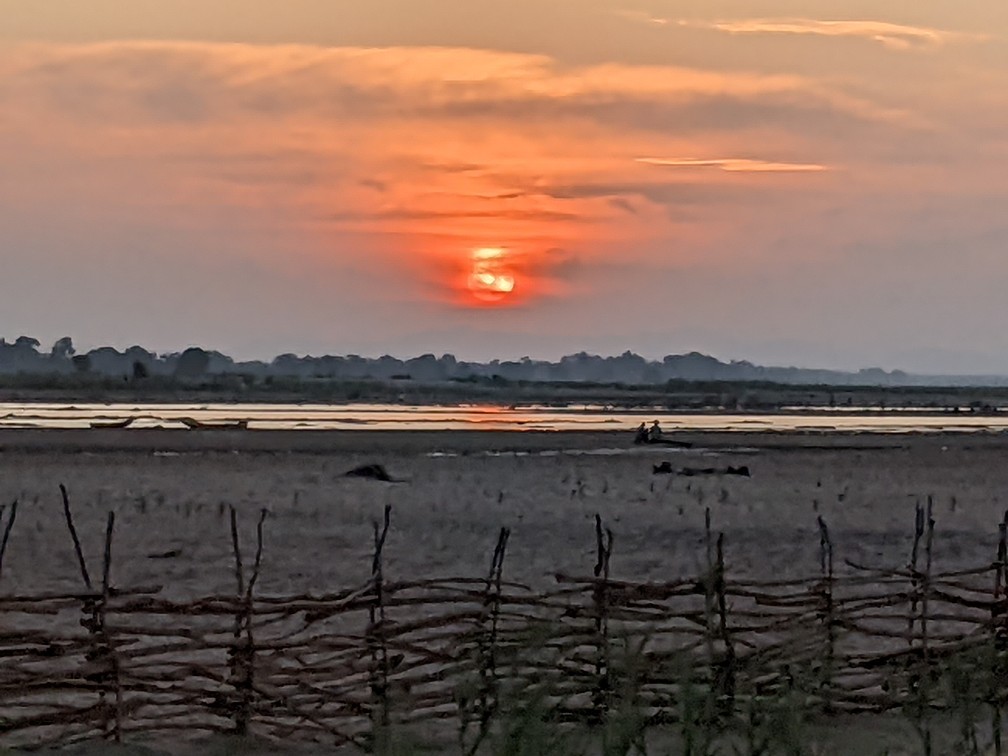
There was a thunderhead cloud on the other side of the river. Rick got a good picture of lighting..
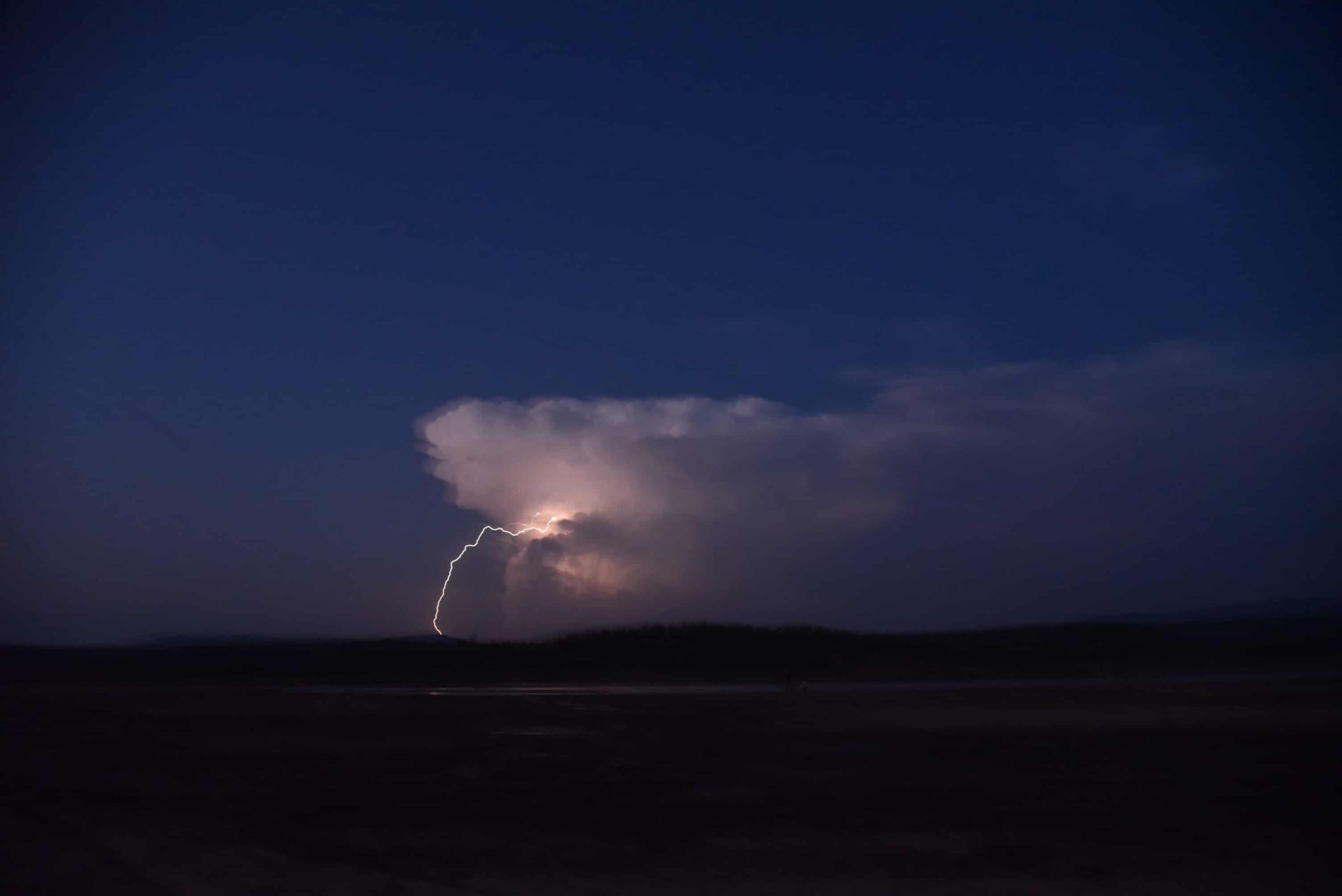
We returned to the camp for dinner. Some new guests had arrived so we had dinner with them. We came back to the tent and went right to bed. Sleeping here is easy.
